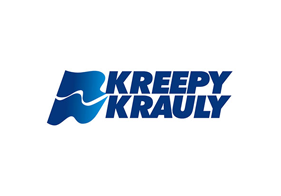If you are running a WordPress website without proper analytics, remember that others can see you are driving blind, and eventually, you will crash somewhere on the map.
Most business owners believe they can understand their website’s performance by looking at visitor numbers on their hosting dashboard, but this is only a superficial understanding.
Real analytics would inform you about who is visiting, what they are doing, where they came from, and most importantly, whether they are taking any desired actions. Google SiteKit can help fill in those gaps, and through our experience collaborating with dozens of Australian businesses to install this useful plugin, we have uncovered some facts from actual experimentation that most instructions fail to convey.
After developing numerous businesses in Australia to use Site Kit and investigating it more thoroughly than anyone else we know, we found that the YouTube videos and blog posts create an impression that installing and connecting it is straightforward – as if it’s already completed. That is incorrect: truly things get even messier in real life than they do in those guides! We have seen firms with seemingly perfect Site Kit configurations, yet they still end up making critical decisions based on incomplete or unreliable data.
The others had beautiful panels filled with numbers that they did not understand, and they were advised to use false strategies that ultimately harmed their web performance. Most businesses find themselves trapped in the gap between theoretical concepts and practical utility, which is what we will examine here.
What Google Site Kit Actually Does (And What It Doesn’t)
Before investigating the specifics, let me clarify that Google Site Kit is not a universal solution. It’s a WordPress plugin that externalises your website with different Google services, like analytics, Search Console, and PageSpeed Insights. Think of it as a dashboard that brings together all your Google services in one place.
Google knows that 35% of the web comes via WordPress and implementations and that many (MANY!) of those WordPress webmasters are using Google products – that’s why they launched Site Kit – to simplify life for millions of already-Google-loyalists.
But, when we started recommending the product to our clients, we were amazed at how many owners thought this product would “magically” increase their SEO! That’s not how it works. Site Kit is a diagnosis, not a remedy. It shows your website’s performance but doesn’t act on it.
The Setup Reality Check
Installation seems simple enough. You simply download the plugin, sign in with Google, and connect your services, correct? Wrong.
We have seen so many WordPress sites where business owners have hastily gone through the setup and had nothing but incomplete or incorrect data because of it. So what is the mistake we see most often? The number one mistake is failing to set up the proper Google Analytics goals and events before connecting Site Kit. Once you have months of incomplete data, remedying it can be difficult.
Set up events before you connect the site kit. If you don’t, you’ll be in the dark for weeks waiting for data.
The Permission Puzzle
The permission system is a source of much frustration. Site Kit needs some permissions from your Google account to receive your data. Then we’ve had clients who never knew why their dashboard was showing errors but finally realised that the employee who set it up left the company and took his or her Google account access with them.
The answer isn’t a difficult one, but it does require foresight. You may want a separate Google account for business analytics, or at least ensure that more than one team member has access. Trust us, you don’t want to get locked out of your site’s data because someone can’t remember their password.
WordPress SEO Integration: The Good, The Bad, and The Ugly
The relationship of Site Kit with WordPress SEO plugins is complex. Based on numerous client implementations, we have architected exactly what you should expect when you combine these tools.
The Good
SiteKit gets along well with most WordPress SEO plugins, and there are a few standout benefits I want to emphasise. The Search Console integration just gives data that Yoast and RankMath cannot access themselves. You’ll know from the search query exactly what is sending traffic to specific pages—a big help for content optimisation.
The click-through rate tracking is particularly useful because it reveals pages that rank well but don’t convert those rankings into actual clicks—a goldmine for quick wins. Perhaps most importantly, Site Kit identifies ranking opportunities that traditional SEO plugins miss entirely.
The Bad
However, things can get messy quickly. There’s significant functional overlap between Site Kit and established SEO plugins, which creates confusion about which tool is responsible for what. Your WordPress dashboard can become cluttered when multiple tools are displaying similar metrics in different formats.
We’ve seen clients spend a long time trying to understand why their Yoast readability score differs from the performance data in the Site Kit without realising that these metrics measure entirely different aspects. The additional plugin load can also slow down your WordPress admin area, which isn’t ideal if you’re already running multiple SEO tools.
The Ugly
This is where things get problematic. We’ve noticed that clients often become obsessed with daily Search Console fluctuations visible through Site Kit. Short-term data variations, which are actually just normal search engine behaviours, often lead them to make impulsive changes to content.
The misinterpretation of data leads to poor strategic decisions – like rewriting perfectly excellent content because traffic dropped for two days. The biggest issue is over-reliance on numbers without understanding the context behind them.
Analytics That Actually Matter
The Site Kit analytics dashboard looks impressive with all its graphs and numbers, but here’s what we’ve learnt: most small business owners focus on the wrong metrics. They get excited about page views and visitor numbers while ignoring conversion tracking and user behaviour.
To ensure you’re using your Site Kit data effectively, it’s important to be able to answer these questions:
- Please identify which pages are contributing to actual business results.
- Where are people dropping off in your sales funnel?
- What content keeps visitors engaged the longest?
- Which traffic sources convert best?
We’ve worked with clients who had thousands of monthly visitors but weren’t making any sales. The Site Kit data revealed that most of their traffic was landing on blog posts and then leaving without visiting service pages. Simple internal linking fixes doubled their conversion rate.
The Mobile-First Reality
One of Site Kit’s features that astonishes clients time and again is its mobile performance tracking. Although most business owners agree that they need to pay attention to mobile site performance, only a few people know how much their search rankings are influenced by it.
If the PageSpeed Insights integration’s mobile score is significantly lower than the desktop score, it’s time to refocus. Your Google rank will definitely drop. To give an easy example from SEO, we can say that Google now goes by, “Your site’s ranking is solely based on the presence of a mobile version of its content.”
We have never had a client with a mobile PageSpeed score above 90 out of 100 report any issues with their mobile loading time. We have a client whose website loads in 2 seconds on desktop but takes over 8 seconds on mobile. We rectified the underperforming mobile performance, which led to a +40% increase in organic search traffic over three months due to the changes we made.
Common Implementation Mistakes
After setting up Site Kit for numerous Australian businesses, we’ve identified patterns in what goes wrong. The most significant mistake is treating it like a “set and forget” tool. Site Kit requires ongoing attention to provide value.
Another frequent problem is data interpretation. We’ve observed that business owners panic when their bounce rate increases, often without realising it. They recently added a chatbot, which kept visitors on pages longer and artificially reduced the bounce rate prior to the increase.
The solution isn’t to ignore the data – it’s to understand what it actually means. Context matters. A high bounce rate on a contact page might be beneficial (people found what they needed), while a high bounce rate on a product page probably isn’t.
Integration Challenges and Solutions
We also learned that Site Kit is responsible for managing data in different Google accounts. If your company uses Google Workspace, formerly known as G Suite, and each user has access to the same Analytics account, you may encounter issues. Problems can then erupt over permissions.
Studies indicate that up to 70% of reported issues stem from conflicts between multiple extensions. Ensuring proper management of individual accounts is therefore essential for stable Site Kit implementations. This is particularly important in environments with complex permission structures and multiple team members.
The cleanest solution we’ve found is to designate one primary account for Site Kit access while giving other team members view-only permissions directly through Google Analytics. The method prevents authentication conflicts and ensures data consistency.
We’ve also learned to be cautious about third-party integrations. Some WordPress themes and plugins don’t play nicely with Site Kit’s JavaScript, which can result in tracking errors or slow page loads. Always test thoroughly after installing new plugins.
The Future-Proofing Factor
One of Site Kit’s biggest advantages is that it keeps your website connected to Google’s ecosystem as things change. When Google announces new features or changes to existing services, Site Kit usually updates automatically to accommodate them.
This is particularly relevant for Australian businesses dealing with privacy legislation. As data protection laws evolve, Site Kit’s direct integration with Google services means you’re less likely to face compliance issues than if you were using third-party analytics solutions.
Making Site Kit Work for Your Business
The key to getting value from Google Site Kit isn’t installing it – it’s developing a routine for reviewing and acting on the data. We recommend weekly data reviews for most clients, focusing on:
- Traffic trends and anomalies
- Top-performing content
- Technical issues flagged by PageSpeed Insights
- Search Console opportunities
- Goal completion rates
Don’t try to analyse everything at once. Please select two or three metrics that directly relate to your business goals and prioritise them first. Once you’ve developed excellent habits around basic reporting, you can expand to more advanced features.
The bottom line is this: Google Site Kit is a powerful tool, but it’s only as valuable as the insights you extract from it and the actions you take based on those insights.
Used poorly, it’s just another dashboard full of numbers that don’t mean anything.
If you’re feeling overwhelmed by the data or aren’t sure how to translate insights into action, that’s precisely where SLINKY DIGITAL can help bridge the gap between information and results.
Want to talk about boosting your website’s performance? Contact our team today.



























